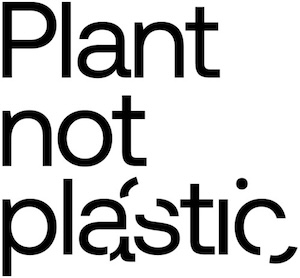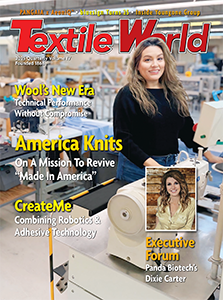 CORDOVA, Tenn. — September 10, 2025 — A new national survey conducted for the National Cotton Council* (NCC) reveals consumers are largely in the dark about microplastic pollution, particularly concerning its origins in everyday clothing. Despite widespread concern, many feel lost on how to effectively address the issue, highlighting an urgent need for clear guidance and accessible solutions.
CORDOVA, Tenn. — September 10, 2025 — A new national survey conducted for the National Cotton Council* (NCC) reveals consumers are largely in the dark about microplastic pollution, particularly concerning its origins in everyday clothing. Despite widespread concern, many feel lost on how to effectively address the issue, highlighting an urgent need for clear guidance and accessible solutions.
 The “Microplastics Corporate Strategy & Insights Consumer Survey,” conducted in 2025 with a sample size of 974 consumers, found that only a third (33%) of consumers are “very aware” of microplastic pollution. Strikingly, only 42% of those aware connect microplastic pollution with their clothing. Consumers are stuck: a lack of understanding and deep uncertainty about effective action present major barriers to their ability to drive change.
The “Microplastics Corporate Strategy & Insights Consumer Survey,” conducted in 2025 with a sample size of 974 consumers, found that only a third (33%) of consumers are “very aware” of microplastic pollution. Strikingly, only 42% of those aware connect microplastic pollution with their clothing. Consumers are stuck: a lack of understanding and deep uncertainty about effective action present major barriers to their ability to drive change.
“Our research clearly indicates that while consumers are concerned about microplastic pollution, they are largely unaware of the significant role their clothing can play in this issue, and crucially, they don’t know what specific actions to take,” said Marjory Walker, Vice President of Council Operations, NCC. “The survey revealed that ‘lack of clear information/guidance’ (34%) and being ‘unsure what specific actions to take’ (32%) are the biggest barriers preventing consumers from taking more action. This isn’t about apathy; it’s that people aren’t sure what actions will make a difference.”
Focus on Health: Alarming Discoveries in the Human Body
The survey also underscored the rising level of public interest for human health impacts, a development amplified by recent scientific discoveries. While environmental concerns like marine life and polluted beaches remain high, 63% of consumers consider microplastics impacting human health a “major concern.” Equally troubling, 68% are highly concerned about microplastics getting into the products we eat and drink.
These concerns are well-founded. Recent studies have made startling discoveries about microplastics within the human body:
- Microplastics have been detected in: critical organs, including the brain, kidneys, lungs, and even the uterus.
- The sheer volume of exposure is staggering: people inhale or ingest on average 74,000 to 121,000 microplastic particles per year. Some research suggests individuals can accumulate up to 130 microplastics per day in their lungs from inhalation.
“When consumers realize that the tiny plastic fibers shedding from their clothes can end up in the food they eat, the water they drink, and even within their own organs, the issue becomes incredibly personal,” Walker added. “This direct health dimension is a powerful motivator, but it also amplifies the need for clear, actionable solutions that empower individuals to protect themselves and their families.”
Introducing “Plant Not Plastic”: Empowering Consumers with Clear Choices
In response to these findings and the growing need for clear consumer guidance, the NCC is proud to announce the launch of its new public awareness campaign: “Plant Not Plastic.” This initiative aims to bridge the knowledge gap by educating consumers on the simple, impactful choice of natural fibers in their clothing to reduce microplastic pollution and its potential health implications.
“The ‘Plant Not Plastic’ campaign is designed to provide a straightforward message: choosing clothing made from natural fibers like cotton is an easy, effective way to reduce your personal contribution to microplastic pollution and its potential health impacts,” Walker explained. “We want to empower consumers to know their clothing choices can make a real difference, simply and affordably.”
Key Insights Driving the “Plant Not Plastic” Campaign:
- Fiber Knowledge Gap: While 59% correctly identify polyester as a type of plastic, many are unaware that other common clothing fibers like nylon and spandex are also plastics. Crucially, 63% correctly identify cotton as a fiber that does not contribute to microplastic pollution. This strong existing recognition of cotton’s natural benefits will be a cornerstone of the campaign.
- Misconceptions about Causes: The majority of consumers (62%) incorrectly believe the degradation of larger plastics like water bottles is the primary cause of microplastic pollution. Only 46% correctly identify synthetic microfibers from clothing as a cause. The campaign will directly address this misconception.
- Guiding Consumers from Concern to Action: The campaign directly addresses the public’s expressed need for clear guidance. By highlighting cotton as a natural, non-contributing fiber, “Plant Not Plastic” will empower consumers to move beyond concern about microplastics to confidently make clothing choices that actively reduce their personal microplastic contribution and potential health exposure.
The “Plant Not Plastic” campaign will focus on:
- Demystifying Microplastics: Clearly explaining how synthetic clothing, which makes up 67% of global fiber production (with polyester alone representing 57%), sheds microplastics during washing and wear.
- Highlighting Health Connections: Emphasizing the pathways through which microplastics from clothing can enter the food chain, water supply, and ultimately, the human body, with potential links to health issues.
- Promoting Natural Fibers: Showcasing the benefits of choosing cotton (which represents 20% of global fiber production) and other plant-based fibers as a simple, natural alternative that doesn’t contribute to microplastic pollution.
“We believe that by providing clear, actionable information through the ‘Plant Not Plastic’ campaign, we can empower consumers to make informed choices that benefit both their health and the environment,” concluded Walker. “It’s time to shift from confusion to confident action, one natural fiber garment at a time.”
As we explore the potential health implications of microplastics, new research is underway by the organization, in partnership with the University of Memphis, on inhalational exposure to microplastics from clothing made from synthetic versus natural fabrics. Research results are scheduled to be available in 2026.
You can learn more about the “Plant Not Plastic” campaign and view an animation at www.plantnotplastic.org and follow us on social: Instagram, Facebook, LinkedIn, YouTube, X, TikTok.
*Survey conducted by Cotton Incorporated for NCC.
Posted: September 10, 2025
Source: National Cotton Council of America




